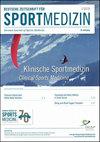维生素D和运动表现:观点和陷阱
Q3 Health Professions
引用次数: 0
摘要
维生素D (VitD)及其调节钙/磷吸收和骨再矿化的生理功能在20世纪初首次被描述。对维生素d信号传导的更好理解促进了我们对足够的维生素d状态对人类健康和表现的重要性的理解。与运动员相关的组织依赖于维生素d来获得最佳功能,包括先天和适应性免疫系统,骨骼肌和骨骼。横断面研究表明,超过一半的运动员缺乏和/或维生素d不足。纠正不足,建议25(OH)D血液水平高于30 ng/ml的目标有可能优化VitD不足运动员的表现和再生相关的各个方面。这可能有助于运动员充分发挥他们的潜力。值得注意的是,没有证据表明维生素d水平在建议范围内存在实际或潜在的健康风险。因此,VitD不在世界反兴奋剂机构的禁用物质清单上。为避免毒性,应监测维生素d状态,并采取个体化和靶向性的补充策略。在有效性和安全性方面,低剂量连续补充维生素d的策略优于间歇性应用超生理大剂量。营养素之间协同作用的概念为维生素d的生物利用度和功能取决于膳食环境、脂溶性维生素A和K2以及矿物质镁和锌的假设提供了合格的支持。DOI: https://doi.org/10.5960/dzsm.2019.404发表于苏黎世大学苏黎世开放资源库和档案馆URL: https://doi.org/10.5167/uzh-201218期刊文章发布版本以下作品采用知识共享:署名-非商业-相同方式共享4.0国际(CC BY-NC-SA 4.0)许可协议。最初发表于:Lechner, K;莱希,B;恩格尔,H;哈莉·M;蠕虫,N;舍尔,约翰内斯(2020)。维生素D和运动表现:观点和缺陷。德国体育杂志,71(2):35-42。DOI: https://doi.org/10.5960/dzsm.2019.404本文章由计算机程序翻译,如有差异,请以英文原文为准。
Vitamin D and athletic performance: perspectives and pitfalls
Vitamin D (VitD) and its physiological function in regulating calcium/phosphorus absorption and bone remineralization werefirst described in the early 20thcentury. A better understanding of VitD signaling has advanced our understanding of the importance of adequate VitD status to human health and performance. Tissues relevant to athletes which depend on VitD for optimal function include innate and adaptive immune system, skeletal muscle, and bone. Cross-sectional studies have shown that more than half of athletes are deficient and/or insufficient in VitD. Correcting insufficiency, the suggested target of25(OH)D blood levels above 30 ng/ml has the potential to optimize various aspects related to performance and regeneration in VitD insufficient athletes. This might help athletes to reach their full potential. Of note, there is no evidence pointing to actual or potential health risks of VitD levels within the recommended limits. VitD is therefore not on the list of prohibited substances of the world anti-doping agency. To avoid toxicity, VitD status should be monitored and supplementation strategies should be individualized and target-oriented. In terms of effectiveness and safety, low-dosed, continuous supplementation strategies of VitD are superior to intermittent application of supraphysiological boluses. The concept of synergy between nutrients lends qualified support tothe assumption that VitD bioavailability and function depend on meal context and onthefat-soluble vitamins A and K2 as well as the minerals magnesium and zinc. DOI: https://doi.org/10.5960/dzsm.2019.404 Posted at the Zurich Open Repository and Archive, University of Zurich ZORA URL: https://doi.org/10.5167/uzh-201218 Journal Article Published Version The following work is licensed under a Creative Commons: Attribution-NonCommercial-ShareAlike 4.0 International (CC BY-NC-SA 4.0) License. Originally published at: Lechner, K; Lechner, B; Engel, H; Halle, M; Worm, N; Scherr, Johannes (2020). Vitamin D and Athletic Performance: Perspectives and Pitfalls. Deutsche Zeitschrift für Sportmedizin, 71(2):35-42. DOI: https://doi.org/10.5960/dzsm.2019.404
求助全文
通过发布文献求助,成功后即可免费获取论文全文。
去求助
来源期刊

Deutsche Zeitschrift fur Sportmedizin
Medicine-Orthopedics and Sports Medicine
CiteScore
2.00
自引率
0.00%
发文量
30
审稿时长
>12 weeks
期刊介绍:
The Deutsche Zeitschrift fuer Sportmedizin - German Journal of Sports Medicine has been
founded in 1951 and is dedicated to the biomedical science and clinical practice of Sports
Medicine and its border fields which investigate the influence of exercise, physical training
and sports as well as lack of exercise to healthy and sick people of all age-groups, related to
prevention, diagnosis, therapy, rehabilitation and physical training.
Manuscripts which deal with actual scientific and medical findings, new hypotheses, actual
controversies and problems in real life will be published. Possible Topics are physiology
and pathophysiology of exercise, medical and biological findings, the medical therapy of
exercise-related medical problems, epidemiology of sedentary lifestyle and related
disorders, therapy of sports injuries - especially the conservative postoperative treatment
of injuries -, medical training and rehabilitation medicine, as well as special social,
cultural, psychological and special science-related aspects of the entire scientific field.
 求助内容:
求助内容: 应助结果提醒方式:
应助结果提醒方式:


